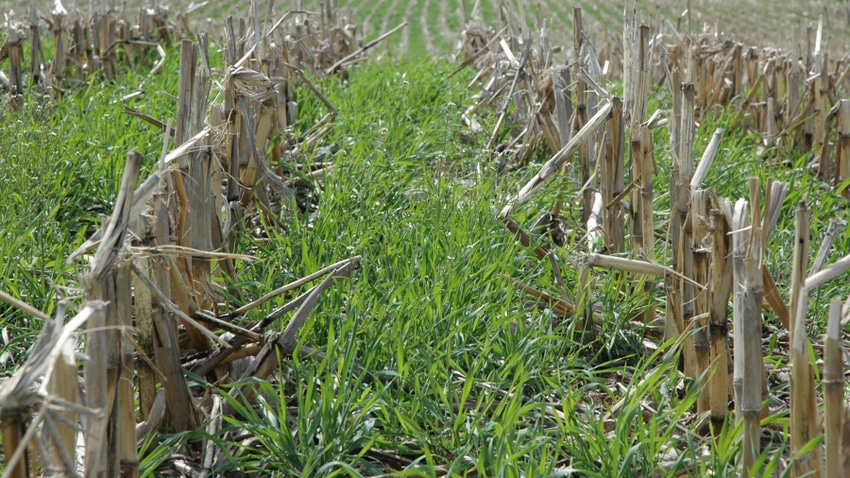July 12, 2023

The end of summer is a great time to make plans for overseeding cover crops. Cover crops planted in the fall can help reduce soil erosion, improve soil health and provide water quality benefits during the months of the year when crops are not actively growing.
Overseeding is done prior to harvest into a standing corn or soybean crop, either by broadcasting with an airplane or using high-clearance equipment. While different cover crop mixes may be used, cereal rye, winter wheat and oats typically make up the majority of cover crop species that are overseeded.
Benefits and challenges
One of the benefits of overseeding is that it doesn’t interfere with harvest operations. Additionally, it allows the cover crop to be planted earlier, with greater chances of receiving rainfall. This is important and can lead to greater amounts of biomass growth in the fall. There are, however, a few drawbacks.
Seed distribution can be variable with aerial seeding. To help with this, uniform seed lots and heavier cereal grains such as cereal rye and winter wheat should be used. Seed germination and stand establishment may be hindered from poor seed-to-soil contact. Seeds may also be prone to predation from rodents and birds.
For these reasons, the seeding rate for overseeding should be slightly higher than drilled seeding rates. The recommended aerial seeding rate is 45 pounds per acre for cereal rye, and 60 pounds per acre for oats. To help ensure the best cover crop establishment, overseeding applications should be completed by early September, assuming adequate soil moisture.
Rainfall and soil moisture are important factors in establishing cover crops. Some of the most successful overseedings are done shortly before a rainfall. Dry conditions, especially for overseeding situations, could cause delays with seed germination; therefore, establishment may be less than ideal. If possible, postpone overseeding until rain chances improve for better germination. While larger-seeded species such as cereal grains require more moisture for germination, once they have enough moisture, they can establish well in a broadcast situation. Switching to a cover crop with improved overwintering ability, such as cereal rye, can also be beneficial if dry soil conditions may persist.
Michel is an Iowa State University Extension and Outreach field agronomist.
About the Author(s)
You May Also Like






